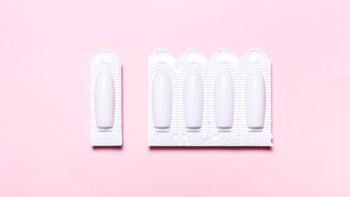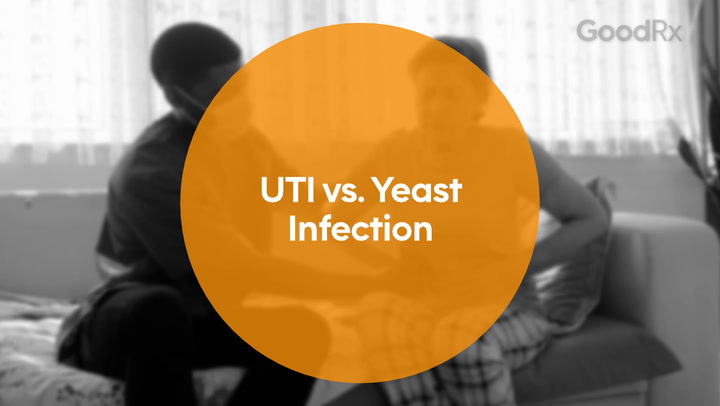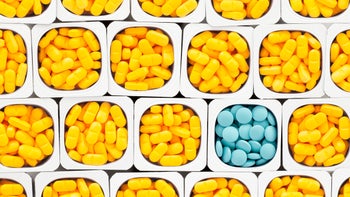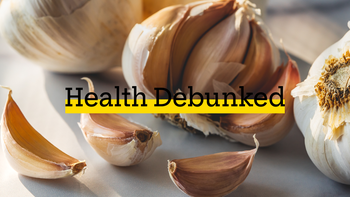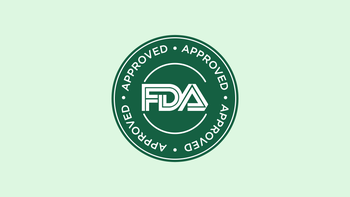
5 Pharmacist Tips for Taking Fluconazole: How Long It Takes to Work and More
Key takeaways:
How long fluconazole (Diflucan) takes to work depends on what you’re taking it for. For vaginal yeast infections, it may only take 24 hours to start feeling symptom relief.
Fluconazole can interact with many medications, including warfarin (Coumadin, Jantoven), certain statins, and sulfonylureas.
The most common side effects of fluconazole include headache, nausea, and stomach pain. Rare but serious side effects include liver problems, serious skin reactions, and anaphylaxis.
Access savings on related medications
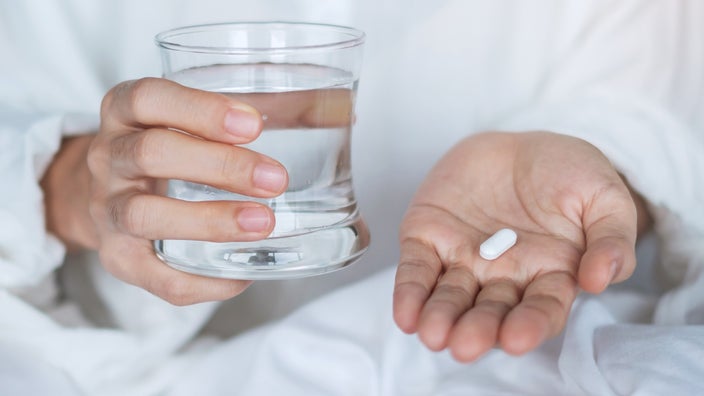
Fluconazole (Diflucan) is an antifungal medication used to treat a variety of fungal infections. How you take fluconazole and for how long depends on what you’re treating.
Regardless of why you’re taking it, you may be wondering how long it’ll take before your infection is cleared. You’ll also need to know what to do if you miss a dose and how to deal with side effects. With these tips and more, you can get the most out of your fluconazole prescription.
What is fluconazole?
Fluconazole is an antifungal medication. It works by slowing down the growth of the fungus that’s causing your infection. It’s available as a tablet, oral liquid, and injection given into a vein. Your dose of fluconazole will vary depending on what infection you’re treating.
Fluconazole may prevent or treat various fungal infections. This includes some infections caused by Candida and Cryptococcus. Candida is a fungi that’s part of the “yeast” family. Fluconazole is approved to treat the following types of Candida infections in adults and children at least 6 months of age:
Vaginal yeast infections
Thrush in the mouth or esophagus
Peritonitis (inflammation of the membrane lining your stomach)
Blood infections
Liver and spleen infections
Pay just $199 for neffy®
Save on the first and only needle-free epinephrine nasal spray. No insurance needed.

Fluconazole is also approved to treat meningitis caused by Cryptococcus (another type of fungi).
Now that you know a little bit more about fluconazole, below are some pharmacist-backed tips on how to take it.
1. How long does fluconazole take to work?
It depends on what you’re taking it for. If you have a vaginal yeast infection, you may only need one dose of fluconazole and may see your symptoms start to improve within 24 hours. If your symptoms don’t improve within 3 days, contact your healthcare provider for next steps. You may need another dose.
For some other infections (like oral thrush), it may take several days before you start to feel better. For more serious infections, like infections of the blood or liver, it could take longer.
Even if you start feeling better, you should still continue taking fluconazole until your prescription is finished. Stopping fluconazole too soon can prevent your infection from being fully treated. This can cause symptoms of an infection to return.
2. What time of day should I take fluconazole?
Fluconazole is usually taken once a day. It doesn’t matter what time you take it. But if you take it for more than one dose, you should take it at the same time each day. This will help you remember to take it. It will also ensure that you have a good amount of fluconazole in your body at all times to treat your infection.
3. Should I take fluconazole with food? And do I need to separate it from other medications?
You can take fluconazole with or without food. But up to 7% of people in clinical studies experienced nausea with single doses of fluconazole. Taking fluconazole with food may help relieve or prevent nausea.
You don’t need to separate fluconazole from your other medications. Drug interactions with fluconazole are possible, but they can occur regardless of when you take your other medications. Examples of medications that can interact with fluconazole include:
Warfarin (Coumadin, Jantoven)
Phenytoin (Dilantin, Phenytek)
Citalopram (Celexa)
Amiodarone (Pacerone)
Clopidogrel (Plavix)
Statins, like atorvastatin (Lipitor) and simvastatin (FloLipid, Zocor)
Sulfonylureas, like glipizide (Glucotrol) and glyburide (Diabeta, Glynase)
This isn’t a complete list of all possible drug interactions that can occur with fluconazole. Give your healthcare provider and pharmacist an updated list of medications you take. It should include any prescription and over-the-counter (OTC) medications, including any supplements and herbal products. They can help you check for potential fluconazole interactions.
4. What happens if I miss a dose of fluconazole?
If you miss a dose of fluconazole, take it right when you remember. But if it’s almost time for your next dose, skip the dose you missed. Take your next dose at your regularly scheduled time.
If you’re taking fluconazole for multiple days, it’s important to remember to take your medication daily. Missing doses can make it harder for fluconazole to treat your infection, and you may not recover as quickly.
But you should avoid taking two doses at once to make up for a missed dose. Doubling up on doses can increase your risk of side effects.
5. What can I do if I experience side effects from fluconazole?
Like most medications, fluconazole has possible side effects to be aware of. Luckily, many of these side effects are mild and manageable. You might experience some of these side effects, but it’s unlikely you’ll experience all of them.
Keep in mind, the list below doesn’t include all possible side effects that can happen with fluconazole. So talk to your healthcare provider or pharmacist about potential side effects before starting fluconazole.
Headache
This side effect is most common with the single-dose regimen used for vaginal yeast infections. To relieve a headache, some simple tips may help. Drinking more water, getting rest, and avoiding alcohol may relieve a headache. You can also talk to your provider about trying an OTC pain medication like acetaminophen (Tylenol) or ibuprofen (Advil, Motrin).
Nausea or upset stomach
Try taking fluconazole with food to help relieve nausea. You can also try the BRAT diet (bananas, rice, applesauce, and toast). BRAT diet foods are easy to digest, so they’re less likely to upset your stomach. If that doesn’t help, talk to your provider about trying an anti-nausea medication. Some OTC nausea medications include dimenhydrinate (Dramamine) and bismuth subsalicylate (Pepto-Bismol).
Stomach pain
Fluconazole can sometimes cause stomach pain. To help relieve stomach pain, you can try drinking small amounts of water and eating smaller food portions. You can consider avoiding foods that can make you gassy, like broccoli and beans. If these tips don’t help, talk to your healthcare provider to see what you should do next.
Diarrhea
If you experience diarrhea with fluconazole, staying hydrated is important. And try to avoid fatty or fibrous foods, which can worsen diarrhea. The BRAT diet may help as well.
OTC antidiarrheal medications, like Imodium A-D (loperamide), may also be an option. But talk to your healthcare provider before trying an antidiarrheal medication.
More serious side effects
Fluconazole can also cause some rare but serious side effects. These include liver problems, serious skin reactions, and allergic reactions.
Liver problems
Fluconazole rarely causes liver damage. If it does, it may or may not be reversible after stopping the medication. Liver damage is more likely if you have existing liver problems or drink a lot of alcohol. It’s also more likely to occur if you need to take fluconazole for a long period of time.
Symptoms of liver damage include yellowing of the skin or eyes (jaundice), dark colored urine, or abdominal pain. Let your healthcare provider know right away if you experience any of these symptoms. They can run a blood test to check your liver function.
Serious skin reactions
A severe rash can be a sign of serious skin conditions, including toxic epidermal necrolysis and Stevens-Johnson syndrome. Seek medical help immediately if you have a severe rash that’s itchy and red all over your body. It may cause your skin to peel or blister.
Allergic reactions and other effects
Fluconazole may cause serious allergic reactions, like anaphylaxis. Anaphylaxis can happen even if you’ve never reacted to fluconazole before. This requires immediate medical attention. Some possible symptoms of anaphylaxis include difficulty breathing, hives, and itching. You could also experience swelling of the lips or tongue.
Fluconazole may cause birth defects in an unborn baby or a miscarriage in pregnant women. If you become pregnant, stop fluconazole and talk to your healthcare provider.
Tips on how to save money with your fluconazole prescription
Fluconazole is available as a lower-cost generic and is covered by most insurance plans.
With a free GoodRx coupon, two fluconazole 150 mg tablets can cost as little as $6 at certain pharmacies. And a 14-day supply of fluconazole 100 mg tablets could cost less than $11. A bottle of fluconazole 10 mg/mL oral liquid can cost about $23 at certain pharmacies with a GoodRx coupon.
The bottom line
How fast fluconazole works depends on what you’re treating. For a vaginal yeast infection, it may start to work within 24 hours. For other infections, it may take several days for you to notice improvement in your symptoms. You should continue to take fluconazole for as long as your healthcare provider recommends, even if you start to feel better before your prescription is finished.
Fluconazole is usually taken once a day at the same time each day. It can be taken with or without food. If you feel nauseous while taking fluconazole, food might help. Besides nausea, fluconazole can cause other side effects including headache and stomach pain. More serious side effects, like liver problems, a rash, and anaphylaxis, may also rarely occur.
Why trust our experts?



References
Bryant Ranch Prepack. (2022). Fluconazole [package insert].
DailyMed. (2022). Fluconazole injection.
MedlinePlus. (2018). Fluconazole.
MedlinePlus. (2020). Abdominal pain.
MedlinePlus. (2020). Peritonitis.
NorthStar Rx LLC. (2022). Fluconazole [package insert].
Was this page helpful?
Related Articles
Browse medications
View AllResearch prescriptions and over-the-counter medications from A to Z, compare drug prices, and start saving.







